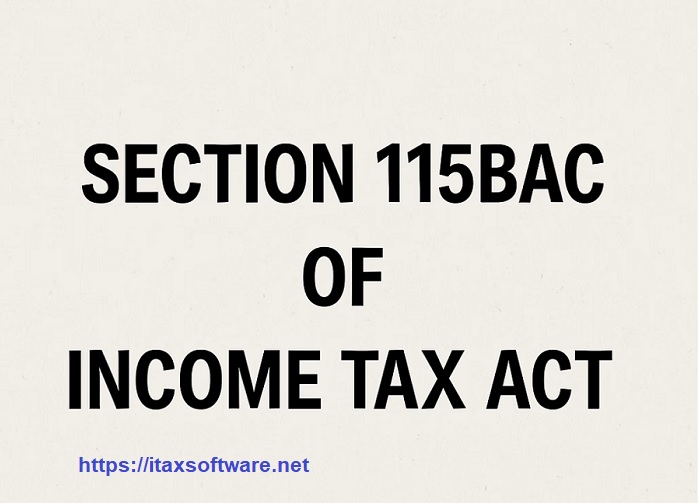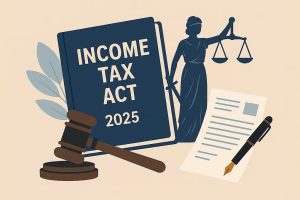Table of Contents
ToggleIntroduction
The Union Budget 2025 has brought in some big updates for salaried employees that will take effect from April 1, 2025. These changes are meant to simplify the tax system, provide relief, and help employees plan their finances better. Think of it like getting a new set of tools in your financial toolkit—you can build your tax-saving strategy more effectively if you know how to use them.
In this article, we will unpack the 7 New Income Tax Rules as per Budget 2025 in a simple, easy-to-understand way. You will also learn how to use the Automatic Income Tax Arrears Relief Calculator U/s 89(1) with Form 10E (from FY 2000-01 to FY 2025-26) to manage arrears and claim relief smoothly.
Table of Contents
| Sr# | Headings |
| 1 | Introduction |
| 2 | Why These New Rules Matter |
| 3 | Increase in Tax Rebates under Section 87A |
| 4 | Revision of Income Tax Slabs for FY 2025-26 |
| 5 | Taxation of ULIPs under the New Act |
| 6 | Higher TDS Thresholds for Deposits |
| 7 | Redefined Perquisites for Employees |
| 8 | Additional Deduction for NPS Vatsalya |
| 9 | Easier Relief on Multiple House Properties |
| 10 | Choosing Between Old and New Regimes |
| 11 | Smart Tax-Saving Investments |
| 12 | Role of Life Insurance in Tax Planning |
| 13 | HRA Exemption for Salaried Individuals |
| 14 | Donations & Section 80G Benefits |
| 15 | Automatic Income Tax Arrears Relief Calculator U/s 89(1) |
| 16 | Step-by-Step Guide to Using Form 10E |
| 17 | Final Thoughts: Preparing for FY 2025-26 |
| 18 | FAQs |
Why These New Rules Matter
Every financial year, the government tweaks the tax system. But this time, the changes are bigger and more impactful. They aim to reduce the tax burden, bring fairness, and align India’s tax rules with modern financial habits. As a salaried employee, being aware of these updates means you can plan, save more, and avoid surprises during tax filing.
Increase in Tax Rebates under Section 87A
One of the most exciting updates is the rebate under Section 87A, which has increased from ₹25,000 to ₹60,000.
- What does this mean? If your income is up to ₹12 lakh, you don’t need to pay any tax under the new regime.
- After considering the ₹75,000 standard deduction, your effective tax-free income goes up to ₹12.75 lakh.
This makes the new regime more attractive for middle-class employees.
Revision of Income Tax Slabs for FY 2025-26
The new tax regime slabs have been revised to ease the burden:
| Income Range | Revised Tax Rate |
| Till ₹4 lakhs | NIL |
| ₹4 – ₹8 lakh | 5% |
| ₹8 – ₹12 lakh | 10% |
| ₹12 – ₹16 lakh | 15% |
| ₹16 – ₹20 lakh | 20% |
| ₹20 – ₹24 lakh | 25% |
| Above ₹24 lakh | 30% |
No changes in old regime slabs.
This progressive structure helps lower and middle-income earners significantly.
Taxation of ULIPs under the New Act
Earlier, Unit Linked Insurance Plans (ULIPs) enjoyed full exemption. But now, if your annual premium exceeds ₹2.5 lakh, the maturity proceeds will be taxed as capital gains under Section 112A.
This ensures ULIPs are taxed fairly like mutual funds, promoting equal treatment across investments.
Higher TDS Thresholds for Deposits
The TDS limit on interest income has been revised:
- For senior citizens, the limit increases from ₹50,000 to ₹1,00,000.
- For others, it increases from ₹40,000 to ₹50,000.
This means more savings in hand and less hassle of TDS refunds.
Redefined Perquisites for Employees
From FY 2025-26, some employer-provided benefits are no longer taxable. For example:
- Medical treatment abroad for employees or family members.
This ensures employees can enjoy these perks without worrying about extra taxes.
Additional Deduction for NPS Vatsalya
If you follow the old regime, you can claim an extra deduction of ₹50,000 by contributing to NPS Vatsalya for your children.
This not only secures your child’s future but also lowers your present tax outgo.
Easier Relief on Multiple House Properties
Previously, you could declare two houses as self-occupied only under special conditions. Now, any two houses can be shown as self-occupied regardless of the reason.
This change makes tax relief on housing simpler and more beneficial.
Choosing Between Old and New Regimes
Here’s the golden question: Old vs New Regime—Which one suits you?
- The new regime offers lower tax rates but fewer deductions.
- The old regime provides more deductions, useful for heavy investors and those with housing loans.
Compare both before deciding—what saves more is what works best.
Smart Tax-Saving Investments
To maximise tax benefits:
- Invest in PPF, ELSS, NPS, and FDs (under Section 80C).
- Choose investments that also secure your long-term goals.
Think of this like planting trees—today’s effort will give you shade (savings) in the future.
Role of Life Insurance in Tax Planning
Life insurance offers:
- Deductions under Section 80C for premiums.
- Tax-free maturity under Section 10(10D).
Whether you choose the old or new regime, life insurance protects your family and your taxes.
HRA Exemption for Salaried Individuals
If you live in a rented house, claim House Rent Allowance (HRA) under Section 10(13A).
But remember, this is only available under the old regime.
Donations & Section 80G Benefits
Donations to approved charities and relief funds give you deductions under Section 80G.
This way, your generosity reduces your taxable income while supporting good causes.
Automatic Income Tax Arrears Relief Calculator U/s 89(1)
Many salaried employees receive arrears or pending payments. To avoid higher tax liability, you can use the Automatic Relief Calculator U/s 89(1).
This tool helps spread the arrears over previous years, ensuring fair taxation and relief.
Step-by-Step Guide to Calculate Income Tax U/s 89(1) Using Form 10E from the F.Y.2000-01 to F.Y.2025-26
To claim relief:
- Log in to the Income Tax portal.
- Go to e-File → Income Tax Forms → File Income Tax Forms.
- Select Form 10E.
- Fill the arrears details year-wise.
- Submit and claim relief under Section 89(1).
Without Form 10E, your relief claim will be rejected.
Final Thoughts: Preparing for FY 2025-26
The new tax rules, as per Budget 2025, bring more relief and better clarity for salaried employees. By understanding the changes, making smart investments, and using tools like the Automatic Income Tax Arrears Relief Calculator U/s 89(1), you can not only save taxes but also build a stronger financial future.
Remember, the best tax planning is proactive, not last-minute.
FAQs
- What are the 7 new tax rules for FY 2025-26?
They include changes in rebates, tax slabs, ULIP taxation, TDS thresholds, perquisites, NPS Vatsalya deduction, and house property relief. - Who benefits most from the new rebate under Section 87A?
Individuals earning up to ₹12 lakh (or ₹12.75 lakh with standard deduction) benefit most under the new regime. - Is ULIP still tax-free in FY 2025-26?
ULIPs remain partly tax-free, but maturity proceeds on policies with annual premiums above ₹2.5 lakh are taxed as capital gains. - Can I show two house properties as self-occupied?
Yes, under the new rule, you can declare up to two houses as self-occupied without conditions. - Why is Form 10E important for arrears relief?
Form 10E ensures your arrears are spread across previous years, helping you claim tax relief under Section 89(1).






